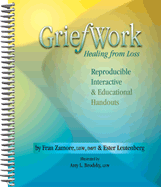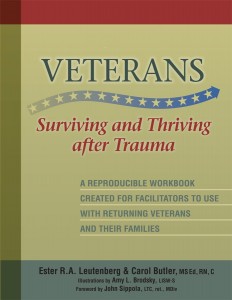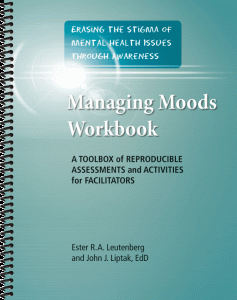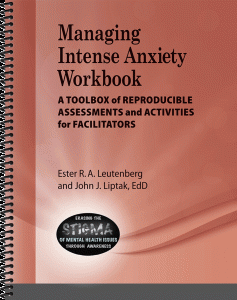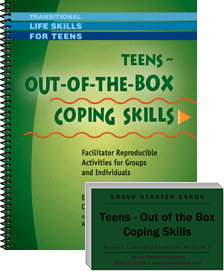 Excerpted from Teens ~ Out-of-the-Box Coping Skills
Excerpted from Teens ~ Out-of-the-Box Coping Skills
By Ester R.A. Leutenberg & Carol Butler, MS ED, RN, C
It’s already August. Teens, whether they have been working, getting ready to go away to college, or just hanging about the house, are bored. They grunt in response to questions, don’t want to go anywhere with the family (pa-leeease, Mom!), have their noses in social media of all kinds at all times, and are, in general, no fun to be around. They need to find some way to cope with the last of summer. We need them to find a way to cope.
Assuming that they already have a firm foundation in the coping skills we teach to our teens, let’s take it a step further and take a look at how teens can thrive by becoming part of a larger cause. We can guide participants to interact with their community by engaging in activities they are passionate about.
I’ve come to believe that each of us has a personal calling that’s unique as a fingerprint – and that the best way to succeed is to discover what you love and then find a way to offer it to others in the form of service, working hard, and also allowing the energy of the universe to lead you.
-Oprah Winfrey
Poems About the Earth
Clean it Up
Clean up the earth,
so it could be a sparkling clean place for us all!
Clean up the earth,
so we can see the gorgeous blue and green on our planet.
The blue and green will shine in our eyes if we clean it up.
So clean it up,
so that we don’t see any garbage ~
any time or any day.
Clean it up
and live in a world of happiness.
The world we live in can be cleaned up and we can be happy!-By Allie ~ 9 years old from
Ms. Siegelman’s Third Grade Class
Nassakeag Elementary School – Long Island, NYIn the Future, My World …
I will live in a country of my own making.
In the future,
Environmental destruction will be the norm.
No longer can it be said that
My peers and I care about this Earth.-Excerpt from The Lost Generation by Jonathan Reed
Before the session begins, place a small globe or a picture of the earth in a covered box.
- At the start of the session, have a volunteer take the picture out of the box and show it to the group.
- Ask the participants what is represented (our world).
- Ask what it means to live in one’s own little world. (Caring only about oneself and one’s close associates.)
- Point out that teens might have a wider view of the world – school, community, etc.
Distribute the handout of Earth Poems. (Click here for printable handout.)
- Have a volunteer read Jonathan Reed’s poem aloud.
- Ask the participants what it means to them. Discuss.
- Have another volunteer read it again, this time from the last line to the first. (Not each word, each line.)
- Ask the participants what it means now.
- Why did the poet want us to hear it both ways?
- Which way do the participants want to see going forward?
- Can we achieve this?
- Ask participants for suggestions on how we can achieve a world where environmental destruction will be rare and folks will care for and cherish the earth.
Point out the list of causes on their handout. Ask what other causes might be added to the list.
| Animal advocacy | Health issues | School |
| Children’s needs | Homeless assistance | The arts |
| Community | Literacy | Veterans |
| Cultural rights and equality | Political issues | Violence prevention |
| Faith-based organizations | Safety |
- Ask them to choose a cause and write a poem about it. As they see from the examples, the lines do not have to rhyme, nor does the rhythm need to sound like that of Robert Louis Stevenson. Write their thoughts about an issue important to them and that causes them concern.
- Have volunteers read their poems aloud. It might help to write one of your own and read it first to break the ice.
- Discuss what ways there are to use their various abilities to support their chosen cause.
- Debate the pros and cons of peaceful demonstrations.
- Identify other ways a message might be conveyed.
- Discuss how to raise funds to support a cause.
- Identify the benefits received from volunteering.
- Help each participant create and share a plan to follow through on advocacy or humanitarian efforts they care about.
- Discuss the value of volunteering for a charity, faith-based or public service organization? Does it negate your contribution if you benefit as well as your cause?
Enrichment Activities
- How can teens use their artistic or literary skills to promote their causes?
- I what other ways can a message be spread about a particular need?
- What are the pros and cons of parades and peaceful demonstrations?
- What are some ways to raise funds?
- What is the value of volunteering for a charity, faith-based or public service organization?

